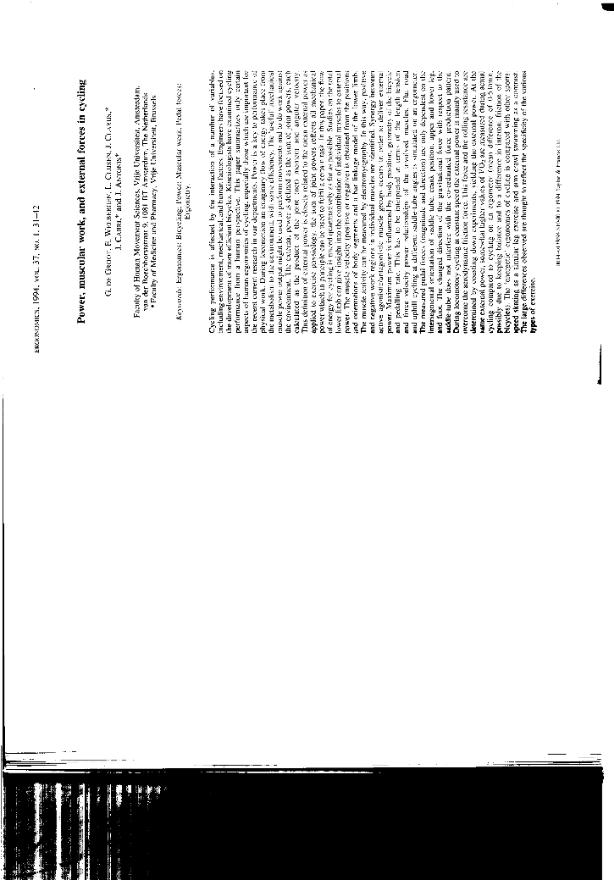Power, muscular work, and external forces in cycling

Contenido multimedia no disponible por derechos de autor o por acceso restringido. Contacte con la institución para más información.
| Tag | 1 | 2 | Value |
|---|---|---|---|
| LDR | 00000nab a2200000 i 4500 | ||
| 001 | MAP20071018986 | ||
| 003 | MAP | ||
| 005 | 20080418115633.0 | ||
| 007 | hzruuu---uuuu | ||
| 008 | 940511e19940101gbr|||| | |00010|eng d | ||
| 035 | $a6800012720 | ||
| 040 | $aMAP$bspa | ||
| 084 | $a875 | ||
| 245 | 1 | 0 | $aPower, muscular work, and external forces in cycling$cG. de Groot... [et al.] |
| 520 | $aErgonomics deals with the application of biological an engineering data to problems relating to the mutual adjustment of the human and the machine. In this paper the bicycle is the machine. Engineers focus on the bicycle and ergonomists examine bicycling work from human perspective. This paper summarizes certain aspects of human ergonomics of cycling. Power is a key to perfomance of physical work and this can be evaluated by ergometry. In the case of a bicycle ergometer, the magnitude of the workload and external power can be expressed exactly and it can be reproduced accurately. A part of the power input known as "maintenance power" is use for muscles which operate the cardiorespiratory system, stabilize the trunk and do other "un-useful" mechanical work. The "useful" mechanical muscle power, which in principle might be used to perform movements and to do work against the environment, is called the power output | ||
| 650 | 1 | 1 | $0MAPA20080550653$aErgonomía |
| 650 | 1 | 1 | $0MAPA20080546779$aDeportes |
| 650 | 1 | 1 | $0MAPA20080546571$aCiclismo |
| 650 | 1 | 1 | $0MAPA20080564803$aAntropometría |
| 650 | 1 | 1 | $0MAPA20080571214$aAnatomía humana |
| 650 | 1 | 1 | $0MAPA20080570873$aTrabajo físico |
| 650 | 1 | 1 | $0MAPA20080578961$aAparato locomotor |
| 650 | 1 | 1 | $0MAPA20080554392$aFisiología |
| 700 | 1 | $0MAPA20080044534$aGroot, G. de | |
| 740 | 0 | $aErgonomics | |
| 773 | 0 | $tErgonomics$dLondon and Washington$gVol. 37, nº 1, January 1994 ; p. 31-42 |

